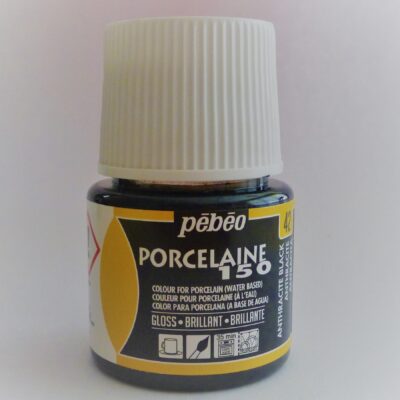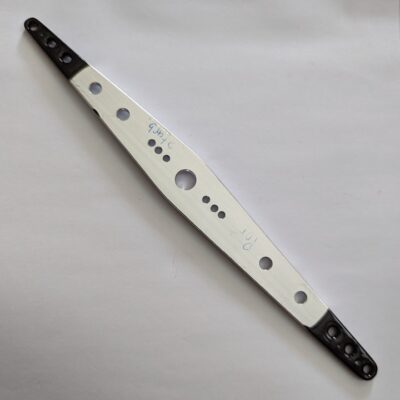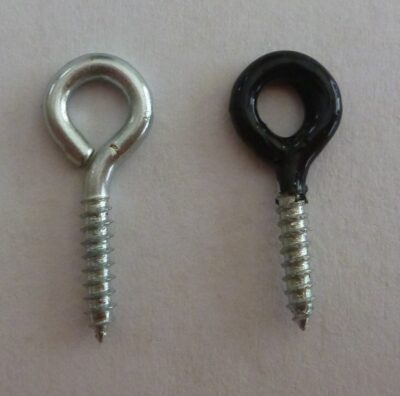Addressing Sail Arm Friction
Article and photographs by Steve LaBrenz
The sail servo arm is a source of friction that can fray mainsail and jib sail sheets throughout a sailing season. Many sailing days have been lost when a frayed sheet breaks from continued stress at this friction point. Beads and blocks are often used to create a smooth surface for a sheet to change direction on the sail arm. I found a simpler solution after a little research: Porcelain Paint.
- Drill out the holes to 1/8 or 3/16 in so the paint doesn’t close the hole; the paint is thick.
- To ensure complete coverage, dip the ends in the paint three times, and after each dip,use a wire, toothpick, or disposable paint brush to remove excess paint and prevent closing-off the holes. Wait 30-60 minutes between each dip.
- Allowed the paint to dry for 24 hours.
- Place the servo arm in a 350℉ oven for 40 min to cure the paint to a final, hard, and glassy finish. You will note that my time and temperature are slightly different that those recommended on the container. My time and temperature are a result of experimentation.
I tested the sail arm with a HiTec 815 servo, a G.T. Power CCPM Servo Consistency Master, and a 2000-mAh 6-volt battery. A 50-lb kite string was passed through either an uncoated or Porcelain paint-coated hole, and provided tension with a rubber band. After 15 min of continuous sheet-in, sheet-out motion, the string in the coated hole showed no sign of wear. The string running through the uncoated hole showed discoloration and was beginning to fray. The paint reduced the friction and protected the sheet from fraying in this test.
You can also use this paint on screw eyes that are used to change the direction of sheets inside the hull of a boat. Cover the thread with a long piece of masking tape and use it as a handle to dip the loop end into the paint. I found two coats of paint were sufficient for these pieces using the same process, a wire or brush, to remove excess paint from the eyelet. Bake as discussed for a final smooth coating,
Complete testing of the coating was performed using the author’s Soling1M throughout the club 2022 sailing season. The main sheet did fray and break late in the season during a high wind day, but not at the sail arm. An uncoated eyelet was the friction point that broke. Now, all eyelets and sail arm contact points are porcelain paint-coated.



